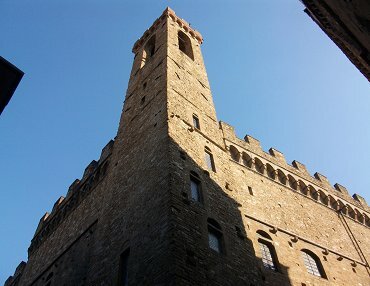The Carrand collection at the Bargello Museum

Everyone knows the Museum of the Bargello in Florence as a great sculpture museum, but not many know that it is also the most important museum of applied arts in Italy. Next to the famous works by Donatello, Verrocchio, Michelangelo and Della Robbia, in fact, there are also everyday objects such as jewelry, caskets, chess sets, weapons, sticks, combs and mirrors of inestimable value.
This extraordinary collection, called Carrand collection, is kept since 1888 in the room called "room of the Duke of Athens". The collection, which reflects the typical eclectic art and culture of the second half of the XIX century, is made up of a collection of minor arts initiated by Jean-Baptiste Carrand and continued by his son Louis.
Jean-Baptiste Carrand was a man of modest origins with a particular passion for medieval objects. And, starting from 1826 he consolidated his reputation as a collector and expert, which was to coincide with a growing interest in France for the reconstruction of the historical past. At his death, his son Louis continued his father's tradition while transforming some sectors because he was more interested in enamels, weapons and furniture, ceramics, metals, textiles and paintings.
Arrived in Florence in 1886, he was called to participate in the celebrations for the centenary of Donatello and at the "Donatello Exhibition" in 1887 he exhibited at the Bargello, precious enamels, ceramics, tiles, ivory, leather and fabrics. At his death, in 1888, Louis Carrand destined his collection to the city of Florence and, in particular, to the Bargello, which so far acquired 3300 objects of the Middle Ages and the Renaissance, thus achieving also an international dignity in the field of applied arts, which has always been neglected in Italy because of an academic tradition that prefer painting and sculpture.
At the Florentine museum were thus placed works of jewelry, Limoges enamels, metals, Indian objects, sculptures and paintings from the collection, but also other Islamic objects, bronzes, plates, pottery, weapons, medals and seals collected from Carrand.
Among the Frankish jewelry there are numerous pins of different shape and function. The most famous and representative piece of Lombard jewelry is the front of the helmet of Agilulfo, in gilded bronze, exhibited along with artifacts of gold Byzantine jewelry, stones, pearls and colored glass and several cameos and carved stones. While, among the finest examples of the profane goldsmith's art stands the Medallion with dromedary in gold and enamels, a French manufacturer of the beginning of the XV century.
Also glazes occupy a significant place in the Carrand collection, both for quantity and quality. Among the oldest ones there is a bronze Dove of the XII century French manufacture.
On display they are also household metal objects such as plates, ewers, including the most unique ones with the form of an armed knight.
Then there are the paintings: the most famous one is the so-called Carrand Diptych, a work of the French school of the second half of the XIV century. The sculptures are few, among them there is a painful Madonna in polychrome wood by a Florentine Mannerist sculptor (ca. 1525), recent purchase of the museum.











